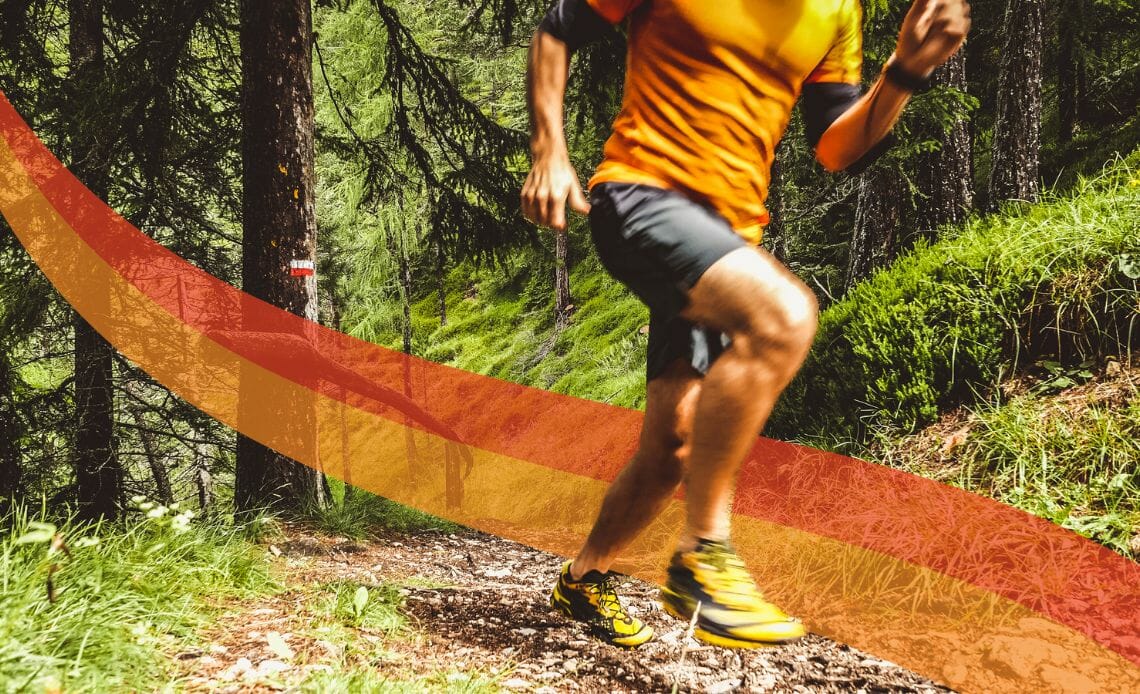
In life’s journey, we often seek the thrill of exploration and the joy of movement. A culmination of these pursuits, trail running, is an exercise and an adventure painted with the vibrant strokes of nature’s brush. But remember, every experience comes wrapped in risks. As we stride forward, we must ensure that our footprints echo with joy, not regret. Herein lies the importance of mastering the art of trail running safety.
Table of Contents
The Power of Preparation: Crafting Your Trail Running Safety Blueprint
In the grand scheme of trail running, preparation is not just a step but a foundation. It is the backbone of our journey, supporting us as we navigate the trail’s unpredictable terrains. A comprehensive course running safety blueprint entails understanding the trail, physical readiness, and packing the right safety essentials.
Deciphering the Trail: A Prelude to Your Adventure
Embarking on your trail running adventure begins long before you set foot on the path. Arm yourself with detailed maps, read first-hand accounts of other trail runners, and keep a close eye on weather forecasts. This preliminary knowledge can help you anticipate potential challenges and prepare accordingly.
The Role of Physical Fitness: Building Your Trail-Ready Temple
Physical preparation extends far beyond regular training. It’s about strengthening your body for the unique challenges of trail running. Incorporate a blend of strength training for stability and flexibility exercises to armor yourself against injuries. Balance your intense training sessions with adequate rest and recovery, as these are just as crucial for building trail-ready stamina.
Safety Essentials: Your Trail Running Survival Kit
In the unpredictability of nature, your trail running safety kit serves as a lifeline. Equip it with essentials such as a first aid kit, whistle, headlamp, map, compass, and a fully charged mobile phone. Pack enough food, water, and a water purifier if exploring remote trails.
Here is a more detailed list of accessories for trail running:
- Headlamp with fresh batteries
- Extra batteries (optional)
- Safety whistle
- Sunscreen
- Lip balm
- GPS multisport smartwatch
- Trail running poles
- Trail running gaiters
- Insect repellent
- Energy gels or bars
- First aid kit
Trail Running Etiquette: A Pact with Nature and Fellow Runners
As we embark on our trail running journey, we must respect the environment and the people we share the trail with. Stick to marked trails, yield to other trail users, and always follow the ‘Leave No Trace principle.
Mastering Crisis Management: A Guide to Handling Trail Running Emergencies
Even with meticulous preparation, emergencies may occur. It’s essential to remain calm and utilize your safety kit effectively in these scenarios. If you need help, consult your map and compass. If you’re injured, administer first aid and call for help.
The Wisdom of Knowing Your Limits: Striking the Balance Between Challenge and Safety
While trail running is about pushing your limits, it’s equally crucial to recognize when to pause. Listen to your body and rest when needed. Remember, turning back when necessary is not a defeat but an act of wisdom.
Embracing the Spirit of Camaraderie: The Benefits of Group Trail Running
Running in a group brings a sense of security, camaraderie, and joy. It also ensures you have someone by your side in case of emergencies.
Crafting Your Trail Running Wardrobe: The Best Clothing for Trail Running
Choosing the proper trail running attire is like selecting your second skin. You want it to be comfortable, protective, and adaptive to various weather conditions.
Fabric: Opt for lightweight, breathable, and moisture-wicking fabrics such as nylon, polyester, or merino wool to keep you cool and dry.
Layers: Dressing in layers is key to adjusting to changing body temperatures. Start with a moisture-wicking base layer, add a mid-layer for warmth, and finish with a lightweight outer layer for wind and rain protection.
Shorts or Leggings: Choose shorts or leggings that provide comfort and a full range of motion. Look for options with pockets to store small essentials like energy gels or your phone.
Shirts: Go for moisture-wicking, lightweight, and breathable shirts. Consider a long-sleeved shirt for added sun protection or warmth.
Socks: Choose socks that are moisture-wicking and provide cushioning and support. Avoid cotton socks, as they can cause blisters and retain moisture.
Hat or Visor: Wear a hat or visor to protect your face and eyes from the sun and to keep sweat out of your eyes.
Sunglasses: Wear sunglasses to protect your eyes from the sun and to reduce glare on the trail.
Trail Running Shoes: Choose trail running shoes designed for the terrain you’ll be running on. Look for shoes with good traction, support, and protection.
Here are some recommended brands for trail running shoes:
- HOKA
- Salomon
- Inov-8
- Altra
- Nike
- Brooks
- La Sportiva
And here’s the list of recommended brands for trail running clothing:
- Salomon
- Patagonia
- The North Face
- Arc’teryx
- Smartwool
- Icebreaker
- Inov-8
- Under Armour
- Nike
- Brooks
- Altra
- La Sportiva
- HOKA
- REI Co-op
- Rab
FAQs
What is trail running?
Trail running is a type of running that takes place on trails, often in natural settings like forests, mountains, or deserts.
What are the benefits of trail running?
Trail running offers many benefits, including improved cardiovascular fitness, increased strength and endurance, reduced stress, and a connection with nature.
What gear do I need for trail running?
The gear you need for trail running includes well-fitting trail running shoes, comfortable running clothes appropriate for the weather, navigation tools, water and food storage, and emergency supplies (depending on the route).
How do I choose trail running shoes?
When choosing trail running shoes, consider the type of terrain you will be running on, the level of support and cushioning you need, and the fit and comfort of the shoes.
What are the different types of trail running shoes?
There are three main types of trail running shoes: light, rugged, and off-trail. Light trail shoes are designed for smooth, well-groomed trails, while rugged ones are intended for more technical terrain. Off-trail shoes are designed for off-trail running and scrambling.
What are some tips for trail running?
Some tips for trail running include starting slow and gradually increasing your distance and intensity, staying hydrated and fueled, being aware of your surroundings, and respecting the environment and other trail users.
Conclusion
To conclude, trail running is a dance with nature, a rhythm of exhilaration and peace. As we navigate this dance, let us ensure our footprints are imbued with joy, not regret. With the proper preparation, respect for nature and others, understanding of emergencies, recognition of personal limits, and the camaraderie of group running, we can transform our trail running journey into an unforgettable adventure.
Also Read:- The Toner Effect: How It Can Give You the Glow You’ve Always Wanted

